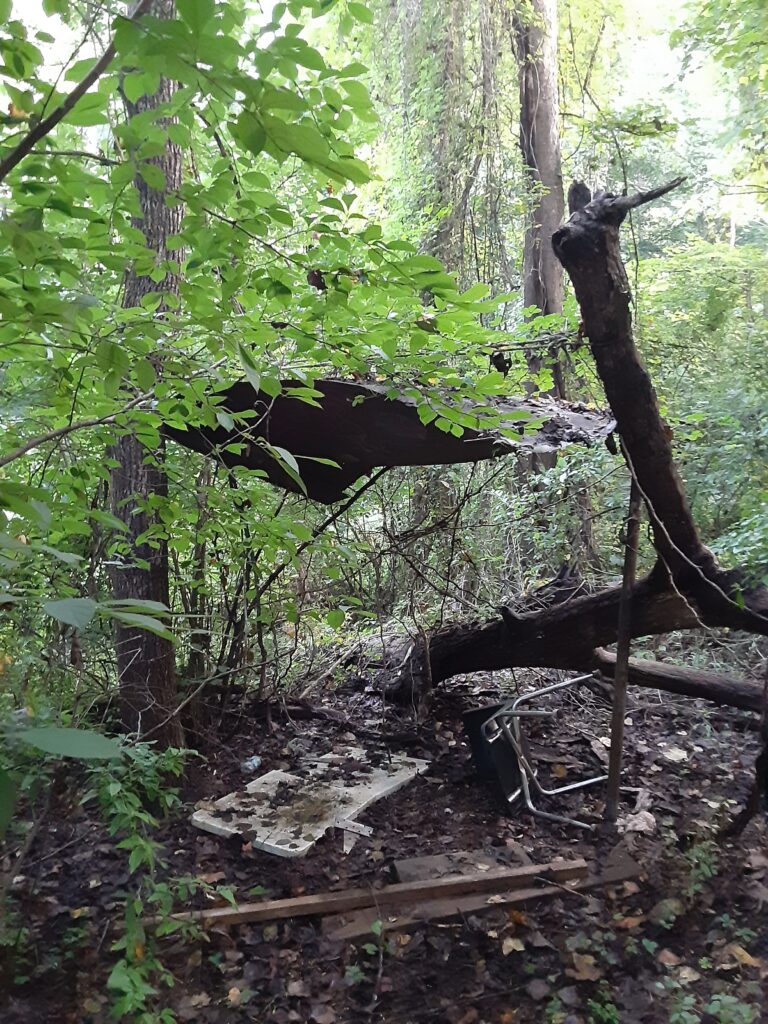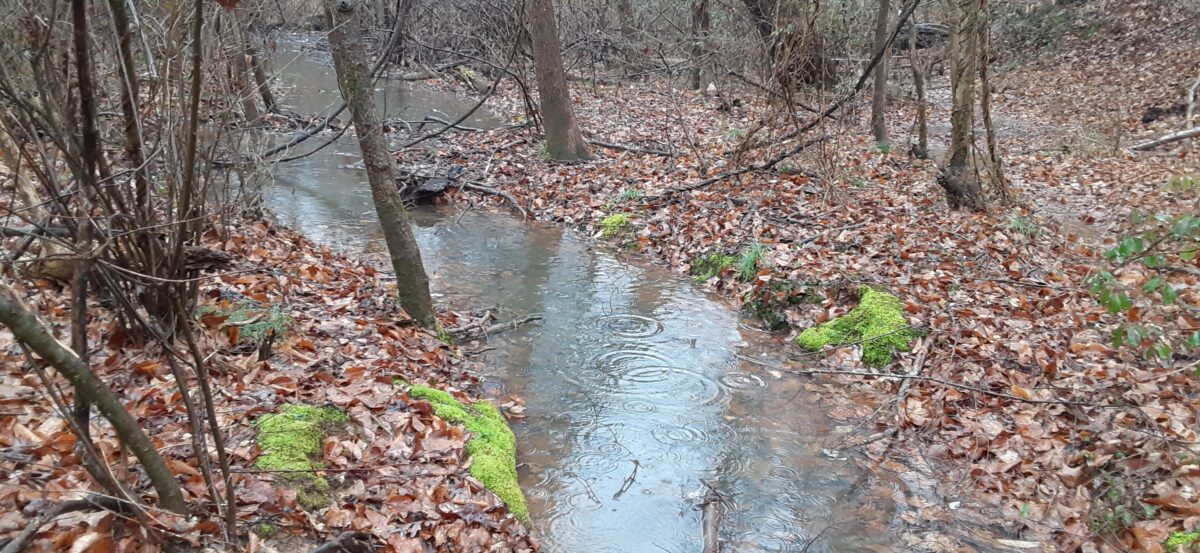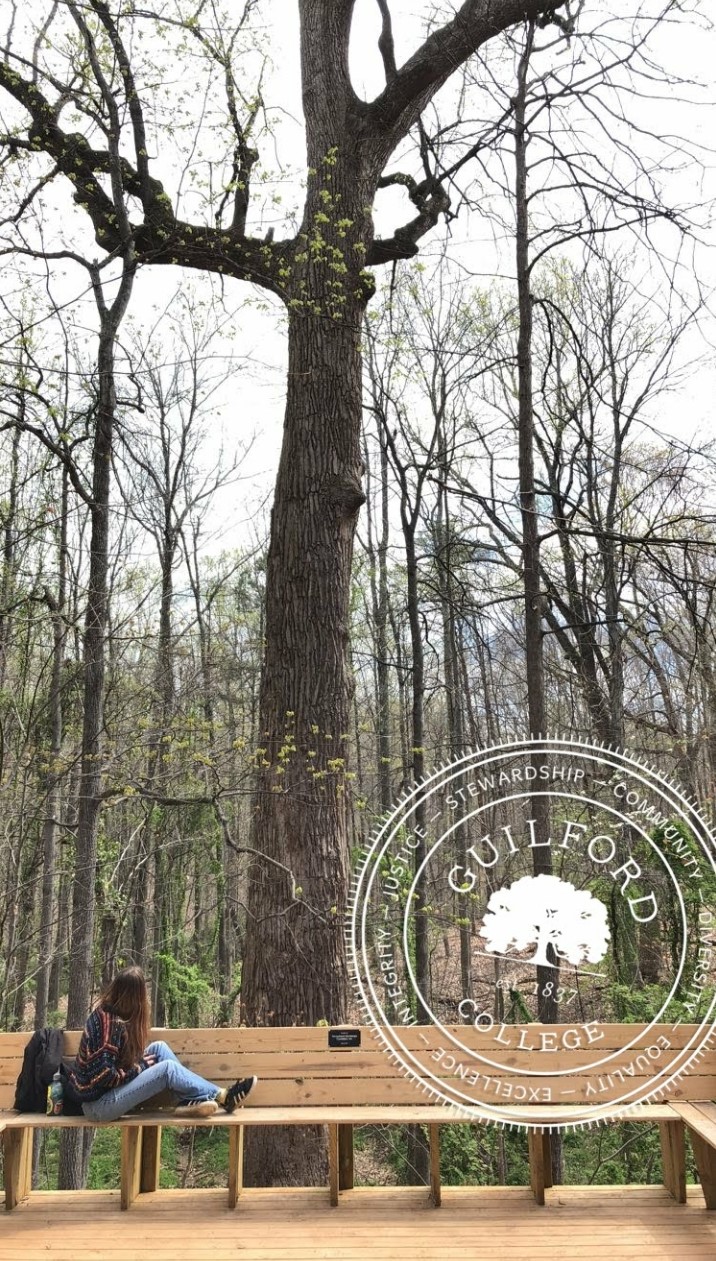Some locations in the woods are well-known among my fellow Guilford students. The Underground Railroad trail and tree is usually the first landmark that comes to mind for most students. With a parking space and sign marking the entrance of the trail off of Nathan Hunt Road, the path to the Underground Railroad Tree diverges to the left which leads the curious traveler to an American Beech tree on the side of the hill. This tree has carvings all other it’s large smooth elephant skin like body that date back decades into history. This tree is often referred to as the Swing Tree. My friends and I called it the Glass Tree because when we found it there were mirror shards surrounding the base. The light reflection is what caught our eye as we ventured the woods. Further down the Underground Railroad tree, it diverges down steeper to an old stone wall now covered in spray paint. It’s likely you’d completely miss it if you weren’t looking for it. The wall seems to have once been a damn across the stream but it no longer impedes the flow of water next to it. My friend and I had been exploring that area one day when we found a large wooden bridge embedded deep in the water. Identifying that it was still fully intact and determined to pull it out, we revisited the bridge another day equipped with a rope. Not afraid to get wet or dirty, we tugged and heaved the bridge about 6 yards over to the stone wall and laid it across the stream to provide easy passage for all who may visit after us.
The Underground Railroad Tree and its current trail has only been a recently developed attraction. The tree itself has gained in popularity because of how long it has been growing in this area. The trail that people walk was not the route of the underground railroad. It is simply named as such because this massive Tulip Poplar tree, dating back to before the 1800s, was present during struggle for freedom for enslaved African Americans. Some of the Quakers that had settled on this land, including the famous Levi Coffin (1798- 1877), had assisted these people in their journey to reach freedom. During this time, almost the entire city of Greensboro was covered in forest. The European American Friends established the land that Guilford College sits upon in the 1700s. In 1875, a boarding school for Quaker students was founded with the construction of Founders. “Founders was just a building in the woods with a fence around it just to keep the animals out. They had to raise their own food, farm, raise animals, and chop their own firewood.” said Stan Gillman, a former Guilford librarian, during an interview for the Guilfordian in 1995. He explained to the interviewer that the women stayed in Founders while the men stayed in Duke Hall. Surrounding these two buildings was practically wilderness leaving them totally isolated for many years until John Woody was instructed by the superintendent of the school to make dirt road to the old train depot. Around the forming of this road came the development of all other roads and buildings we see today. The woods have undergone an immense amount of change since the founding of this school by the Religious Society of Friends but the massive old Tulip Poplar remains tall healthy and strong.



